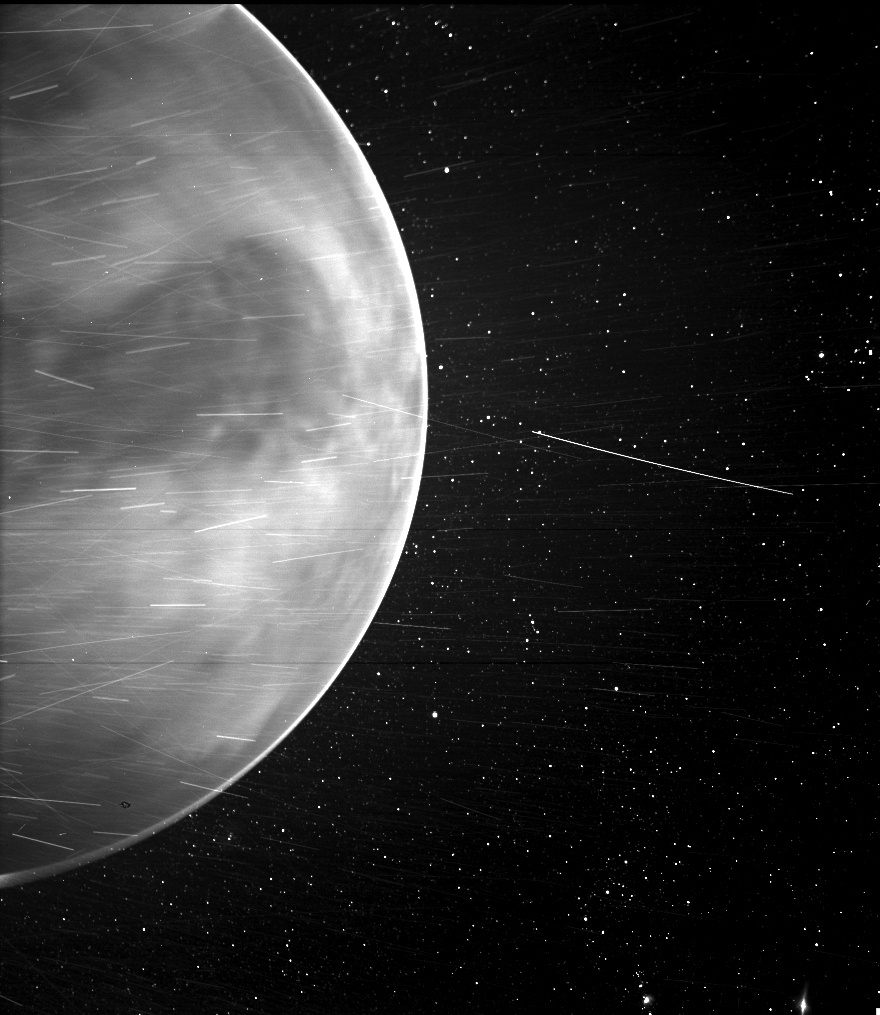
When flying past Venus in July 2020, Parker Solar Probe’s WISPR instrument, short for Wide-field Imager for Parker Solar Probe, detected a bright rim around the edge of the planet that may be nightglow — light emitted by oxygen atoms high in the atmosphere that recombine into molecules in the night side. The prominent dark feature in the center of the image is Aphrodite Terra, the largest highland region on the Venusian surface. Bright streaks in WISPR, such as the ones seen here, are typically caused by a combination of charged particles — called cosmic rays — sunlight reflected by grains of space dust, and particles of material expelled from the spacecraft’s structures after impact with those dust grains. The number of streaks varies along the orbit or when the spacecraft is traveling at different speeds, and scientists are still in discussion about the specific origins of the streaks here. The dark spot appearing on the lower portion of Venus is an artifact from the WISPR instrument.
| Date Taken: | 07.11.2020 |
| Date Posted: | 04.15.2021 07:58 |
| Photo ID: | 6599928 |
| VIRIN: | 200711-N-NO204-001 |
| Resolution: | 880x1015 |
| Size: | 459.96 KB |
| Location: | US |
| Web Views: | 29 |
| Downloads: | 6 |

This work, Peering through the clouds of Earth’s ‘Evil Twin’ surprises NRL sky watchers [Image 2 of 2], by U.S. Naval Research Laboratory, identified by DVIDS, must comply with the restrictions shown on https://www.dvidshub.net/about/copyright.